Big things have small beginnings. Prometheus, bro. Photo by Jay Maldonado.
This piece originally ran in Nike’s “Go Skate Day” ‘zine that was distributed during the accompanying weekend in June. The initial idea was a “History of Go Skate Day,” and there’s really no way to tell that story without it originating at Metrospective, a website that many of the kids skating that weekend likely never even heard of, as it existed mostly from the late nineties until maybe just shy of ten years ago. Quartersnacks, and many local-centric websites have since followed in its footsteps (whether they know it or not), so here is an important chapter of how the skateboard internet began.
Today, it’s hard to imagine skateboarding without the internet. But in the not-so-distant past, you had to buy VHS tapes to see who-did-what, know someone to find the new secret spot, and hear about events through word of mouth or paper flyers. In the mid-nineties, Bryan Chin began the first New York City skate website as a school project. That site would become Metrospective.com, one of the first great independent skateboard websites. On it, you could wait patiently as your 56k modem loaded an eight-second clip from the Brooklyn Banks, map out a midtown mission if you were a tourist, or see who was who from Sunday’s Newport session (“I was the white guy with the blue hat whose board went into the water.”) The New York skateboard community had an online home where everyone was connected — the kids who never left Brooklyn now heard what happened downtown each weekend. Metrospective became the backbone for the first All City Skate Jam in 2002, a virtually sponsor-less event that sought to mend a skate scene fragmented by 9/11 and all its heightened security, and eventually evolved into what you may now know as “Go Skate Day.”
Where are you from and how did you get into skateboarding?
I was born and raised in Queens. I started skateboarding with my friends from school when I was 13 in the mid-to-late eighties. Skateboarding was much more colorful then, with crew names like the Plaid Fish Tribe. The sickest trick I ever saw was a boneless off the top of a truck or a wallie off a tree trunk.
What was skateboarding like at that time?
I skated with a lot of people, some you probably never heard of like Peter Sarne, Benny Guerra, Paul Moix, Jay Gonzales, Rick Pham, Paul Leung and later the Rodneys [Torres and Cooper], and even later Jay Mallolly, Karim Frezno. Basically all of the Queens locals over time. There would be the OD crew [OD was a skate shop on the west side of Manhattan, near Jacob Javitz Center], the Skate NYC crew [East Village skate shop], the Benji’s crew [Lower East Side skate shop], and we were the Queens crew. Everyone would meet at the Banks and then all the crews would go to Seaport, World Trade and the rest of downtown, then skate up to Astor together around sundown, and then go to midtown from there and break night. The only events back then were the HiBA and Banks contests or occasional demos at Danny’s ride-a-way.
Did you always have an interest in creating websites? How did your first site come about?
I was in college upstate between 1992 and 1996 for IT stuff. The web was in its beta version. It was a hot thing in school to learn about upcoming web jobs. The big question was how to apply it. I took what I liked at the time, which was skateboarding, and made it part of my school project. There weren’t many skate sites back then. The problem was, what do you do with skateboarding on a website? My first website was called “The City,” and it was off a college URL. I had some photos I took with a point and shoot and a spot list. A lot of people started coming to the site for the spots, but there were definitely no skateboarding videos online at this time.
How did you first get involved with filming?
I was always messing up my ankles, and eventually I tore a tendon or a ligament. That limited the amount of time I could be on a board. I saved up and bought a camera thinking that I’m gonna be around skateboarding anyway, so I might as well do something useful. If it wasn’t for R.B. Umali, Chris DeWolf, Jay Maldonado and Ted Newsome, I would’t know anything about filming.
First, the footage was just for me and my friends’ enjoyment, but eventually, I figured out how to import clips off the camera onto my Dell Pentium 1 with a 200 MB harddrive. I uploaded a few clips to my site. The earlier search engines like Alta Vista and AOL would direct a lot of traffic to it because it was one of the first sites to have clips of skateboarding online. I just wanted to show my friends skateboarding without the traditional route of getting it into 411 or Transworld. Photos weren’t that big of a deal for the internet back then because everybody had photos. People were mostly psyched on the videos and spot list.
How did Metrospective begin?
I didn’t realize The City got big until the college hosting it shut me down for using too much bandwidth. I also only had 5 MB of space on my account. Later, my friend hooked me up with maybe 10 MB, but that was enough for maybe five video clips. Another friend at SUNY Stonybrook hooked me up with unlimited bandwidth, but the school caught on and I got shut down again. Once I exhausted all my favors from dudes who worked at school IT departments, I decided to pay for my own hosting.
At the time, nobody cared about New York. New York skaters would fly to California to “make it.” Aside from Zoo York or a magazine doing an occasional New York piece, nobody cared. I realized that if we didn’t put it out there ourselves, nobody else was going to do it.
Why’d you switch the name from “The City?”
I was watching the 411 New York Metrospective for the millionth time on VHS. And I thought, “I’m going to do a New York City Metrospective, but for the web.” Instead of one issue, it’s going to be an ongoing New York issue.
Were there a lot of other skate sites around at the time?
There were a few great ones — Pacific Skateboarding [a Vancouver scene site], WISkate [a Wisconsin scene site, which is still around today], a Toronto website. I’m not saying they were the only websites but those were my favorites. Those sites drove me. If Wisconsin’s doing it, New York’s gotta be on the map too.
How did the site catch on?
Most found it through search engines, and they’d tell others about it because of the video clips. In terms of New York, not many people knew or cared about it. The web wasn’t a big deal back then for skateboarding. Skate companies barely even had websites.
People didn’t think skate websites would ever turn into a serious outlet for content?
When I started filming friends who were sponsored, there was a line being drawn between what tricks could and couldn’t be put online. Everybody wanted to save everything for videos, even if they weren’t actually filming for a video. People felt like the internet was not a legitimate place to put skateboarding on. It was for magazines or videos only. My friends had these rules of not putting up certain footage, and not listing certain spots. I’d only pick spots that everyone knew about. But the colored bumps behind that school in the L.E.S., any metal ledges in Tribeca, any spot in the Village besides Houston, the spots at museums on the Upper East or West Side, and even initially BAM were off limits.
When did you notice that Metrospective had a big audience?
When the skaters on it would start getting recognized by people, like “Oh, I saw you on Metrospective,” sometimes not even in New York. Also, I made these “I Love NY” Metrospective stickers — I forget who it was — but someone I know was in Sweden, and they saw the sticker on a store’s ice cream refrigerator.

Did you realize that pretty much all skateboard media would eventually come to be digested through the internet?
I didn’t have some grand knowledge of where it was going. I think a lot of other people had it figured out by a certain point, but they didn’t necessarily want it to change. They wanted old media to stay. “Classes” of skateboarders are easier to maintain that way. Here’s a dude who gets in every mag, every month. Here’s the dude who only gets a few clips in video magazines, but now there are guys who kids see on the internet every day.
What was the inspiration for the All City Skate Jam in 2002?
I was logging footage in the ABC Skateshop office on E. 13th Street with Kerel Roach. We were talking about how skateboarding in New York sucked at the time. Security was so tight after 9/11. Downtown was basically a ghost town. Everything was very cliquish. I think people avoided skating with other people. They would actually say things like, “I’m going to skate this spot — you can’t come,” because they didn’t want too many people increasing the bust factor. It made me miss back in the eighties and nineties when you would skate the Banks with twenty of your closest friends, then everyone would skate Seaport together, skate Astor together, get food together, go to midtown together.
There were also very few skateboard events going on in New York at the time. It was like we were re-realizing what I had realized when I was inspired to start Metrospective: nobody in the industry cared about New York.
How did that turn into the jam?
All we did was pick a date, and I made a flyer of all the spots that were on the site, meant to be a map of where we were going that day. I dropped the flyers off at Supreme and ABC, and then posted it on the site.
Were there any sponsors?
It was just Metrospective and ABC. I asked the 5Boro guys to show up and skate, but I don’t think that was even on the flyer.
Were you surprised at how gigantic the turnout was?
I was amazed. I thought there would be twenty people at best. It was probably 150 to 200 people between those who initially showed up at Battery Park [the meet-up point] and all the people who joined us along the way. I was freaking out thinking we were all going to get arrested. We didn’t have a megaphone or anything, I really had no idea how I was going to control that many people.
What was the route you had that day?
From Battery, we went to the twelve at Veteran’s Memorial and a bunch of people ollied it. Mike Wright switch ollied it. Security tried to kick us out but they couldn’t because there were too many kids. I think he was actually afraid because kids started yelling at him. The cops showed up eventually, and we went to Seaport, where Aaron Suski broke my camera doing a trick off a ramp we made out of the benches. Then we went to the Banks, Black Hubba, and then up to Tompkins.
On the flyer, we were supposed to go to midtown from Tompkins. Next thing I know, the cops show up and start asking, “Who organized this?” The cops locked one of the gates and cornered us off, so there was one exit. They interrogated everybody trying to leave, asking who was running the event. Nobody really said anything, everybody was like, “I don’t know, we just showed up, it’s a skate spot.” They didn’t kick us out of the T.F. though, they were just like, “This stops here.”
Did you guys get any crazy reactions from regular pedestrians?
Well, we wound up on the radio. Someone told me they heard a radio report saying there was some type of a “skateboard riot” going on downtown with hundreds of kids blocking traffic.
Did the police intervening deter you at all in doing it for the next year?
No, if anything it got us more psyched. We were impressed with the turnout and how much positive feedback we got on the [Metrospective] forums from people who were there. That’s the point when Steve Rodriguez wanted to be more involved with it.
Did you approach it differently for the second time?
We did the route in reverse in 2003; we started at Tompkins and then went downtown. Once I realized we’d have more than twenty people with us, we understood midtown was out of the question. We planned it more in advance, because we were able to see people anticipating it on the website. Twice as many kids showed up for the second year. I actually sought out sponsors and there were a lot of companies down to give us product. None of them took it seriously the way they do now, they were just more like, “Here are all the boards I can’t sell.” The first product toss happened in the second year.
Was it generally still the same route but backwards?
Yes, but we went to Supreme that year. I called Alex Corporan because he had mentioned they were down to give some product out. I don’t think he realized when I told him “A lot of kids,” it meant hundreds of kids. That whole half-block of Lafayette was covered with kids. They were sitting on cars and blocking traffic, so we had to make the product toss pretty quick. From there, we just did the downtown route and ended at Battery Park.
People would initially show up because they were psyched on the event and what it was about, but in the future jams, they kind of started showing up expecting to come up on product.
How did it blow up from the second skate jam onwards, and eventually evolve into Go Skate Day?
The flyers and promotion started having listed sponsors. Magazines started covering it too, and it actually got dubbed as “Go Skate Day,” instead of just a skate jam. I think in the third or fourth year, we started getting permits. Prior to that, we were very covert about who was running and promoting everything, especially after we realized people were going to get hurt. Technically, gathering more than fifty people at one place is considered illegal. At the numbers we were at, it was considered a “parade.”
Why’d you stop getting involved with it in future years?
As it transitioned into Go Skateboarding Day from just a skate jam, it became bigger than what one person could handle. Steve had the resources to keep it going in the direction it needed to go. It was just too big for me. Kerel even disappeared at that point.
Why did you phase out of updating the website?
The website ended on the day my son was born. I couldn’t see a way of being a good father and still contributing to the New York skate community in the way I wanted to. I just wanted to focus on being a good dad.
Thanks to Bryan for taking the time out of his schedule to talk to us about Metrospective, and to Nike for being down to run this in printed form.

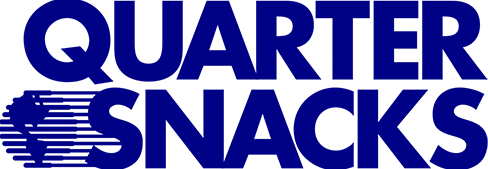


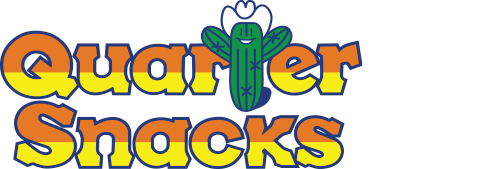

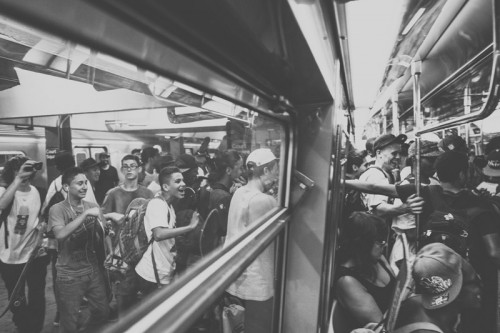
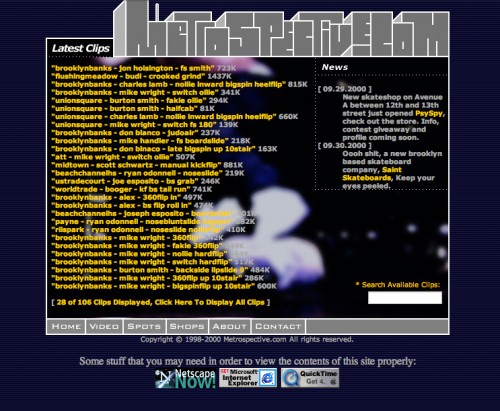
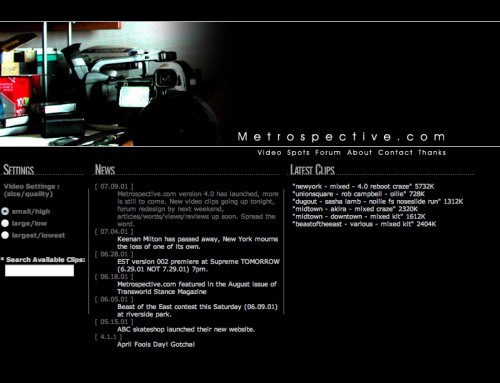
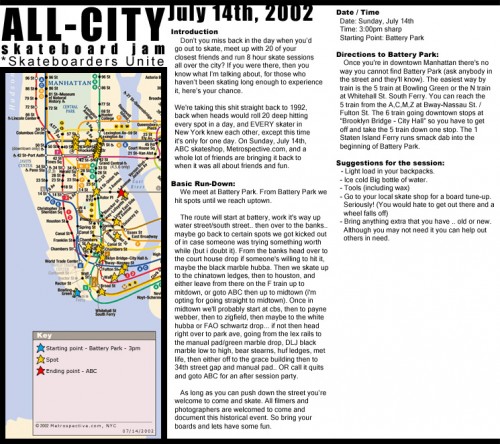
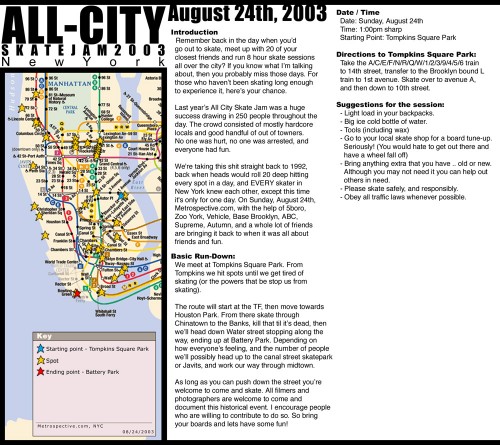
much respect to bryan chin, he’s done a lot for new york skateboarding. this was a really good read
Thanks Chin
Metrospective was the first website I visited daily when I got my first corporate office job in NYC. Dreaming of late night downtown sessions.
IT_DONT_MATTER was the king of Offical New York forums way before those clowns at slap got out of diapers.
THANKS.
Found this somehow. Coverage of All City Skate Jam 2003. Cheesy ass music included: http://www.metrospective.com/clips/html/allcity-skatejam-roughedit-biggie.html
I’m Smack’d off dat strawberry disel ,ju heard
Metrospective was so tight. Ive since quit the addiction, but thats where I became hooked on messageboarding. Ive got a few of those Metrospective stickers in my possession still too.
great site, big thanks for letting us all feel like we’re on the inside
definitely remember seeing clips of charles lamb on metrospective and then seeing him in person at red benches when i visited New York in high school. Got me stoked as fuck.
hahahaha IT_DONT_MATTER yes! I grew up on those forums being a young LI skater wanting the in on what was goin on in nYc. Official Skateboards will always be my favorite board company, had like 5 or 6 of those decks. Thanks for your contributions Bryan, true Og
yo! Plaid Fish Tribe is still rippin’. old skaters never die……. they just smell that way.
Bring it back!
Official New York was amazing and hilarious at the time. It felt like a real contribution to the community – all the diverse people out there skating New York every day. Not just industry stuff. Thank you.